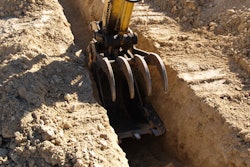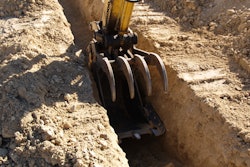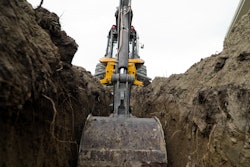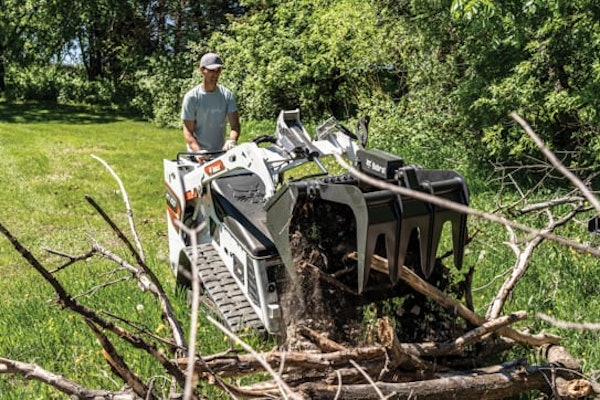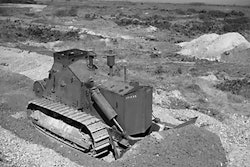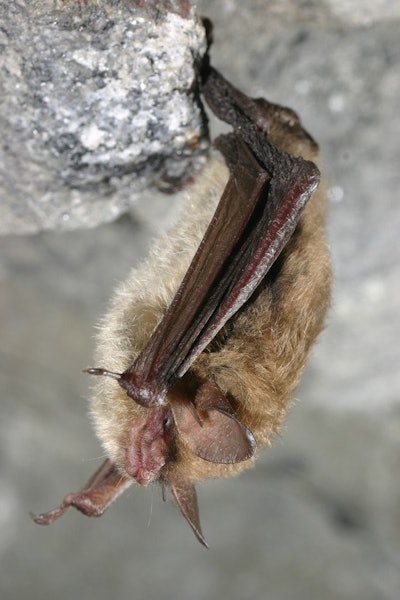
A long-eared bat making the endangered-species list and a new final rule governing roadside ditches are two environmental obstacles roadbuilders may find themselves facing in the new year.
On November 29, the U.S. Fish and Wildlife Service announced it had reclassified the northern long-eared bat from threatened to endangered due to a rapidly spreading disease. White-nose syndrome threatens the bat’s population, which is found in 37 states, according to FWS. The new rule takes effect January 30.
Then on December 30, the U.S. Environmental Protection Agency finalized a new rule to re-establish federal authority over ditches that the agency believes could lead to pollution entering “navigable waters.” Manmade ditches, often along roadsides, will be regulated under the Clean Water Act, as falling under the Waters of the United States definition.
Some contractors associations say the new rules could hinder road and other construction projects by tying them up in confusing red tape.
“This rule will delay critical infrastructure projects and raise costs for the construction industry and taxpayers without providing meaningful improvements to water quality,” says Ben Brubeck, vice president for regulatory, labor and state affairs for the Associated Builders and Contractors, of the final waters rule.
Concerning the northern long-eared bat’s new endangered status, the American Road & Transportation Builders Association had this to say:
“The declaration triggers significant new regulatory requirements under the Endangered Species Act, allowing the federal government to set aside areas of land that are deemed ‘critical’ for the bat’s survival. … Once land is set aside, any sort of development (including transportation construction) becomes severely restricted.”
Ditch or waterway?
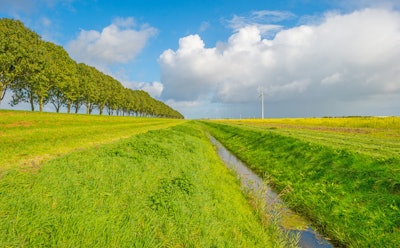 The EPA has expanded federal Clean Water Act regulations to extend to ditches.Getty Images
The EPA has expanded federal Clean Water Act regulations to extend to ditches.Getty Images
ARTBA argues that roadside ditches provide necessary rainwater drainage from construction sites and are needed for safety to prevent roadway flooding. Regulating them does not serve any “tangible environmental purpose.” It adds that they are not the same as traditional jurisdictional wetlands “because the only time they contain water is when they are fulfilling their intended purpose.” It also says the rule could delay projects beyond the $1.2 trillion infrastructure law’s goal of completing environmental reviews within two years on projects, because it will add more permitting requirements.
Meanwhile, the U.S. Supreme Court is expected to rule early this year on a lengthy legal battle challenging federal regulation of manmade ditches under the Clean Water Act. ABC argues that federal agencies have created more confusion by not waiting until after the Supreme Court’s decision.
The final rule is expected to take effect in the first quarter of 2023, in 60 days after it is published in the Federal Register, according to ARTBA. ARTBA says it plans to mount a legal challenge to the rule.
{Related content: The Definition of “Waters” Hurting Infrastructure Projects, Critics Say}
Bat protection
ARTBA has also challenged the Fish & Wildlife Service’s designation of the northern long-eared bat as endangered.
The association says the cause of white nose syndrome and how to prevent it is unknown, and more information is needed. It argues that without more study of the disease’s cause, an endangered listing “could have significant negative consequences – whether intended or not – for the Biden administration’s commitment to rebuilding the nation’s transportation infrastructure.” ARTBA adds that state departments of transportation have begun adding provisions to contracts to protect the bat’s habitat.
{Related content: A Long-Eared Bat Could Hold Up Infrastructure Projects, ARTBA Fears}





